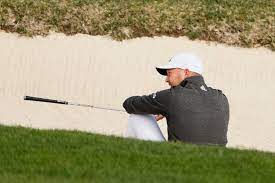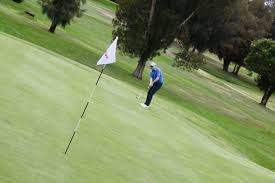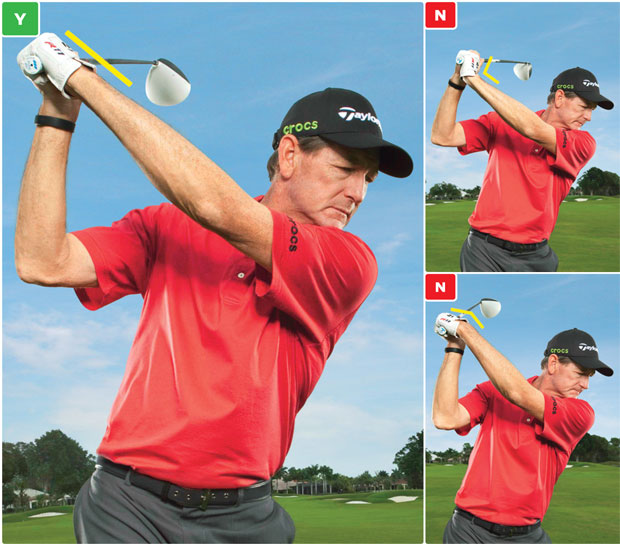Wouldn’t it be nice to score a round of golf where you could play a MULLIGAN every time you miss-hit a ball? I’m NOT talking about a shot that is a little off-line or short of your target. I’m talking about drives into the woods or fat fairway shots or thinned chips over the green. If you could cut out those miss-hits, you could shoot in the 80’s or even the 70’s. We have some suggestions to get you on track to avoid those miss-hits. [I wish we could totally eliminate miss-hits but I believe practicing as often as the pros could do the trick.]
Every successful shot has 4 DISTINCT STAGES. Don’t skip one: Preparation, Practice Swing, Mental Focus and Rhythm. Take your time and get these right to eliminate those miss-hits.
1/ Preparation
Take your time to chose the right club to reach your target and to setup on the right target line. Knowing your normal draw or fade or the slope break on a green are all critical to making a good shot on the right target line. Don’t try for the high risk shots. Hit a layup if you know your shot will not hold the green. Get rid of your dumb thoughts while you have plenty of time to sort this out.

2/ Practice Swing
After you choose your target line, take your practice swing stance. Make a perfect full practice swing with the exact backswing, lag and cadence that you need in order to hit your target line. Build confidence that you will swing with power for your drives; brush the grass with your fairway woods & hybrids and impact your ball before turf with your irons.
3/ Mental Focus
Establish your confidence by remember past excellent shots with your club, which were caused by a full backswing, smooth release and a balanced finish. Be confident that you are about to duplicate that amazing feeling. [NO negative thoughts.]
4/ Duplicate Your Perfect Rhythm [These are your only thoughts during your swing.]
Take your full, backswing (with time to flatten your leading wrist and add lag at the top). Let your hips start your downswing for a whooshing release that you can hear as you finish in a balance pose.
You may want to try using the count of “1 and 2” where “1 and” to help you slow down your takeaway for time to (a) flatten your wrist (to shallow your downswing) and (b) create wrist lag at the top. When you say “2”, starts your hip rotation for your downswing. Build confidence when you practice for consistent rhythm using your GOLFSTR+ to limit your wrist and arm angles. Buy one today at www.GOLFSTR.com
Golf Truism #81: Everyone replaces their divot after a perfect approach shot.











